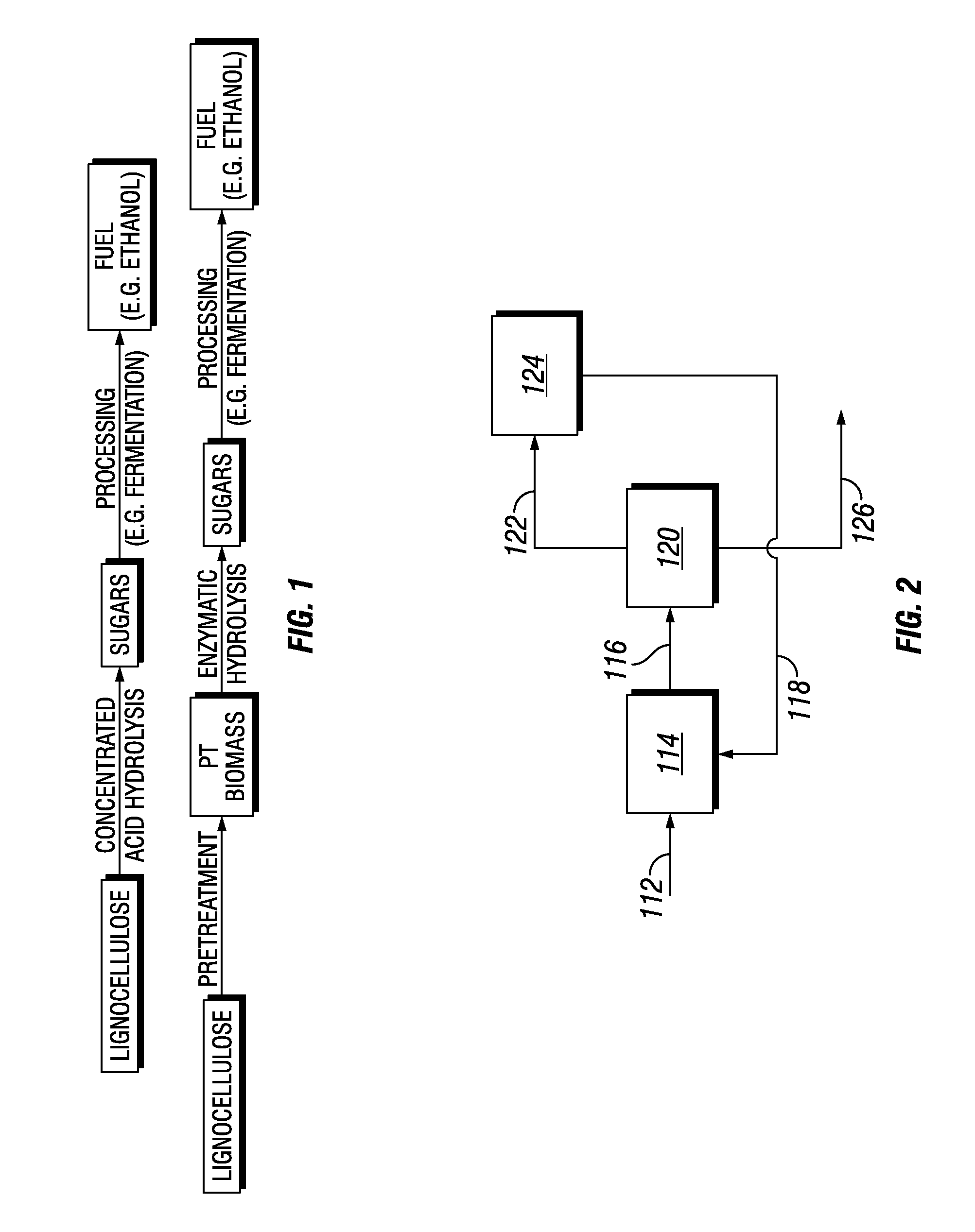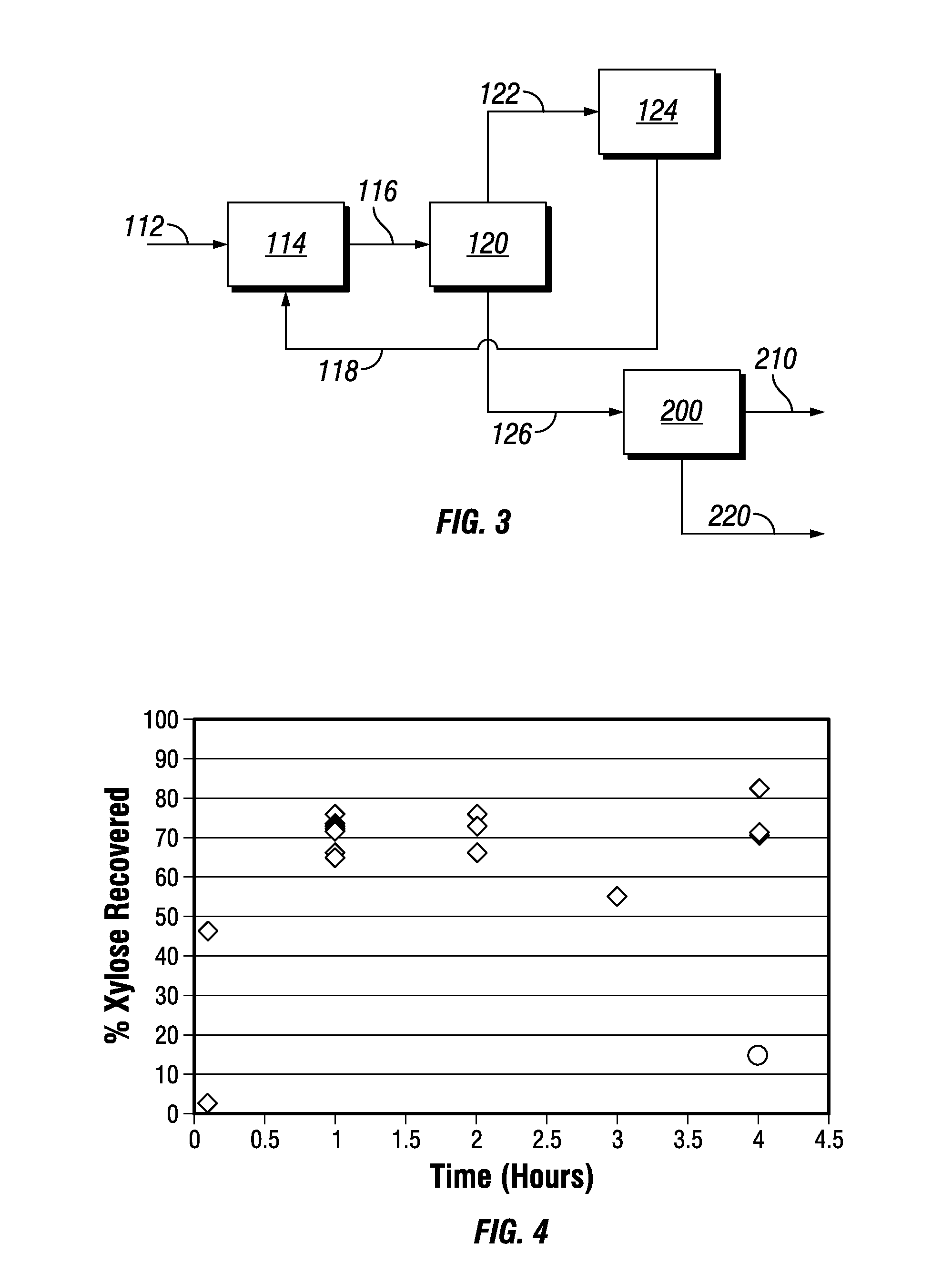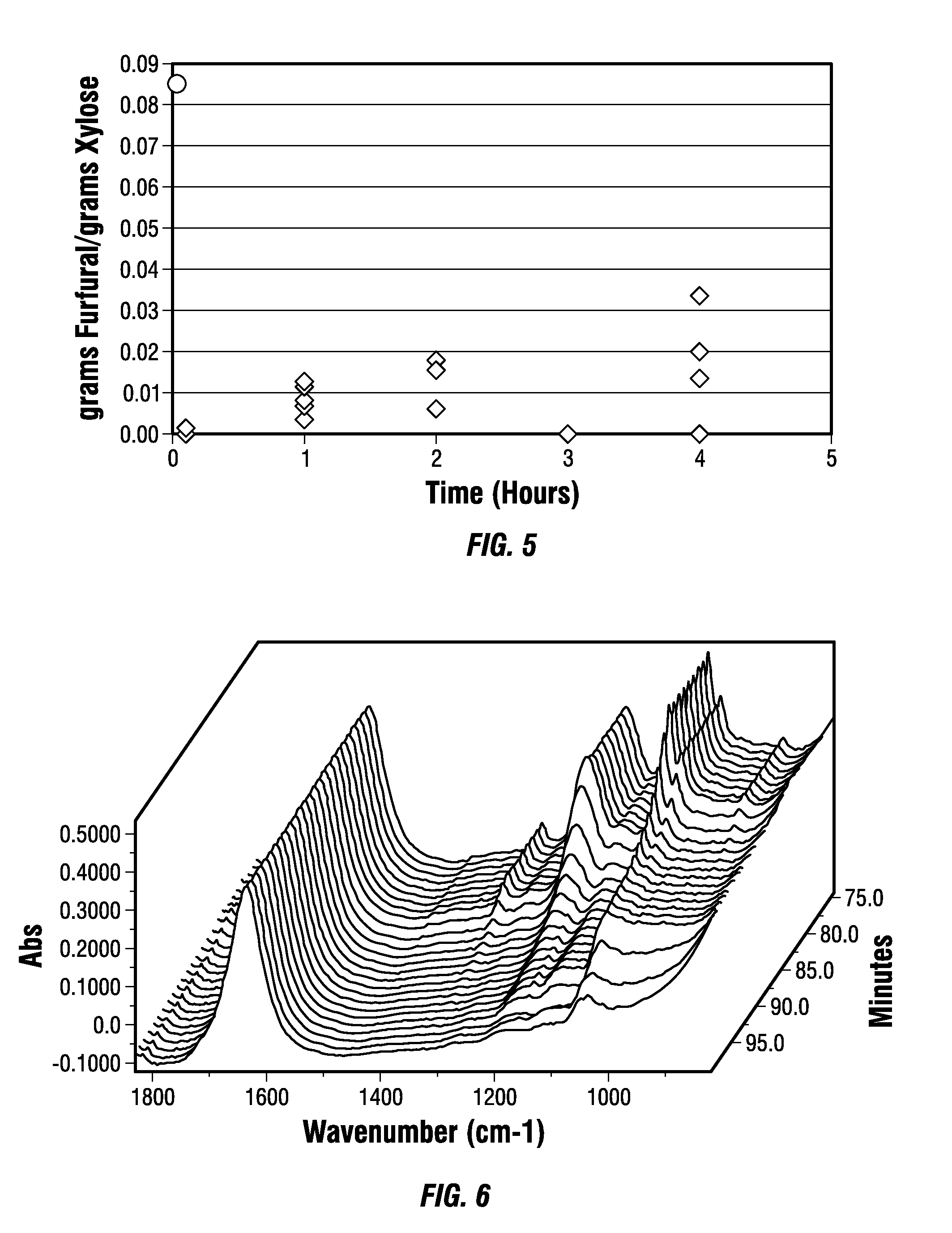Treating biomass to produce materials useful for biofuels
a technology of biofuels and biomass, applied in the direction of biofuels, glucose production, sugar derivates, etc., can solve the problems of low yield of desired sugars, cumbersome and expensive approaches, and all have failed to meet economic hurdles, so as to achieve the effect of easy reversal to recoverability
- Summary
- Abstract
- Description
- Claims
- Application Information
AI Technical Summary
Benefits of technology
Problems solved by technology
Method used
Image
Examples
example 1
Formation of 40% wt. α-Hydroxyethane Sulfonic Acid from Acetaldehyde
[0081]Into a 12 ounce Lab-Crest Pressure Reaction Vessel (Fischer-Porter bottle) was placed 260 grams of nitrogen degassed water. To this was added 56.4 grams of acetaldehyde via syringe with stirring. The acetaldehyde / water mixture showed no apparent vapor pressure. The contents of the Fischer-Porter bottle were transferred into a chilled 600 ml C276 steel reactor fitted with SiComp IR optics. A single ended Hoke vessel was charged with 81.9 grams of sulfur dioxide was inverted and connected to the top of the reactor. The SO2 was added to the reaction system in a single portion. The pressure in the reactor spiked to approximately 3 bar and then rapidly dropped to atmospheric pressure as the ISIR indicated the appearance and then rapid consumption of the SO2. The temperature of the reaction mixture rose approximately 31° C. during the formation of the acid (from 14° C. to 45° C.). ISIR and reaction pressure indicate...
example 2
Formation of 41% wt. α-Hydroxymethane Sulfonic Acid from Trioxane
[0082]Into a 600 ml C276 steel reactor fitted with SiComp IR optics was added 280.29 grams of nitrogen degasses water and 46.88 grams of trioxane. The reactor was sealed and purged with nitrogen and a single ended Hoke vessel was charged with 101.26 grams of sulfur dioxide was inverted and connected to the top of the reactor. The SO2 was added to the reaction system in a single portion. There was no apparent reaction and the ISIR revealed IR bands consistent only with the starting components. This is consistent with the fact that trioxane must be heated to generate the carbonyl formaldehyde. The reaction mixture was heated to 105° C. with stirring, the pressure of the mixture rising to 8.3 bar. On approaching the target temperature an exothermic reaction took place, the pressure in the reactor dropped to 4.1 bar due to consumption of SO2 and the temperature rose from 105° C. to 124° C. ISIR and reaction pressure indica...
example 3
Formation of 40% wt. α-Hydroxymethane Sulfonic Acid from Paraformaldehdye
[0083]Into a sealed and nitrogen sparged 600 ml autoclave equipped with a SiComp IR probe was charged 285.02 grams (ml) of nitrogen sparged DI water and 49.31 grams of Paraformaldehyde (Aldrich 158127, batch MKAA1858, 95%). The autoclave was sealed, sparged with nitrogen and stirred. ISIR showed water and dissolved paraformaldehdye. A Hoke vessel containing 100.01 grams of sulfur dioxide is inverted, attached to the reactor as a “blowcase injector” and the sulfur dioxide injected into the reactor through a ball valve. ISIR immediately showed a growing SO2 band at 1331 cm−1. The pressure in the reactor rises to 3.31 barg. A slow reaction initiates with bands indicative of α-hydroxymethane sulfonic acid growing in. The reaction accelerates as an reaction exotherm occurs, the temperature of the reactor rises from 25° C. to 39° C. as the pressure of the reactor falls to 0.5 barg. The ISIR shows the rapid growth of ...
PUM
| Property | Measurement | Unit |
|---|---|---|
| temperature | aaaaa | aaaaa |
| temperature | aaaaa | aaaaa |
| temperature | aaaaa | aaaaa |
Abstract
Description
Claims
Application Information
 Login to View More
Login to View More - R&D
- Intellectual Property
- Life Sciences
- Materials
- Tech Scout
- Unparalleled Data Quality
- Higher Quality Content
- 60% Fewer Hallucinations
Browse by: Latest US Patents, China's latest patents, Technical Efficacy Thesaurus, Application Domain, Technology Topic, Popular Technical Reports.
© 2025 PatSnap. All rights reserved.Legal|Privacy policy|Modern Slavery Act Transparency Statement|Sitemap|About US| Contact US: help@patsnap.com



